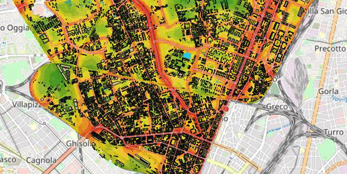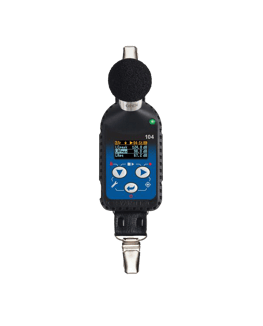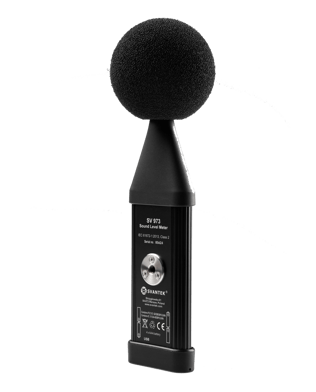MEMS Microphone Technology in Smart Cities
Noise exposure of a population is currently one of the biggest problems in cities. High levels of noise can cause serious health problems and even increase mortality. Noise management methods using static noise maps that turn out to not be effective enough with this problem. Rapid development of remote communication and new technologies such as MEMS microphones moved noise management into an online management system, a typical approach of smart cities management.
You can’t manage noise if you don’t measure it.
Typical features of noise understood as air pollutant, is its variability over time and location. In other words, noise pollution changes dynamically in function of time and distance. Therefore, static methods such as calculation of noise maps are subject of high uncertainty.
Current methods of analysis of noise pollution is mostly based on noise mapping in cities, which is mandatory to perform in large urban areas.
However, these maps can only be treated as a simple overview of potential noise in certain areas. Noise maps are generated based on small amount of measurements across small number of points in the cities, together with calculations of amount of traffic in these areas.
 This is then processed by specialized software to produce noise map for entire cities. Apart from that, construction sites are performing their own monitoring in cases of bigger construction sites. However, in this case, data usually is not available to the public.
This is then processed by specialized software to produce noise map for entire cities. Apart from that, construction sites are performing their own monitoring in cases of bigger construction sites. However, in this case, data usually is not available to the public.
The drawback of static methods has been already recognized not only in noise but also air pollution. Nowadays, monitoring evolves into a multi-point on-line measurement with a large amount of monitoring stations across the city, that can be freely accessible for the public. Integration of noise monitoring with an existing air pollution monitoring network provides a good and cost-effective tool for noise management. Management of noise pollution in function of the location is possible thanks to wearable noise meters, worn by public services around the city.
Development of MEMS technology breaks the barriers of large scale noise monitoring.
Historically noise meters designed for monitoring were too big and too expensive to use them for multi-point large-scale monitoring. A vast majority of noise meters use analogue microphones, because only they can offer proper accuracy for measurements. The disadvantage of that is the fact that cost of such microphone is significant and can vary from one thousand to up to couple of thousands of dollars. This, in turn, increases costs of noise meters. Another disadvantage of such microphone is that it is prone to mechanical damage. Sometimes, even one impact can cause damage that requires the entire microphone replacement. The solution for that problem is a MEMS microphone.
This, in turn, increases costs of noise meters. Another disadvantage of such microphone is that it is prone to mechanical damage. Sometimes, even one impact can cause damage that requires the entire microphone replacement. The solution for that problem is a MEMS microphone.
MEMS (MicroElectrical-Mechanical System) microphones use pressure-sensitive diaphragm etched into silicon wafer and integrated preamplifier. A miniature size combined with no mechanical parts makes MEMS microphones both cheap in production and much more robust than its analogue counterpart.
MEMS microphones are now used in many industries and products, for example smartphones. However, accuracy of these microphones was too low for use with standardized measurement equipment. Right now the situation is changing. Using new, high-tech MEMS microphones together with professional measuring equipment allows for creation of sound level meter with MEMS microphone that meets the same requirements as meters with analogue microphone. Thanks to that, measurement equipment has decreases in both size and price.
With MEMS technology the multi-point noise monitoring became possible; this can be done by combining MEMS microphones with miniature sound level meters that are easy to use, cost-effective and transfer noise level data online - live. MEMS microphones also allows for decreasing size of the meter. In addition to that, simple solutions for easy online connection is using capabilities of smartphones, which are now used by everyone. Such noise meters will have wireless connection with the phone, which in turn will provide user with additional data: GPS location, weather data, as well as access to internet.
Noise pollution in urban areas - data
High noise pollution is a growing problem in urban areas all around the world. Currently, cities are getting bigger every year. This expansion increases large amounts of potential noise, from industrial as well as civilian sources. Constant flow of new citizens causes more and more construction being done, including apartment blocks and housing, office spaces and entertainment venues. Construction sites are a source of high noise levels and might be annoying or dangerous for people living close to construction areas. In addition to that, cities must provide appropriate amounts of new means of transport: railroads, both over and underground, buses, trolleys, car parks, highways, motorways, airports. Public transport generates even more noise pollution. First – in construction phase, second – during everyday usage.
Information we can gather from analyzing the data is that in most cases around 60% of this high noise exposure is only up to 5dB above safe level. This means that most noise exposure can be easily avoided, provided that there is an appropriate, constant data about exceedances delivered from potential noise sources.
Regarding trends for the future, in some areas the data looks promising. Noise exposure generated by road traffic and industries decreased significantly in last 10 years.
The problem that can be observed above is that in the last five years decrease of noise exposure not only stopped, but data shows that there is a slight increase. This is caused by a lack of innovation in noise monitoring areas that needs to be addressed to see a decrease again.
Also, a bigger problem can be seen while looking at data from trends regarding air and rail transport. In these areas, noise exposure is constantly increasing.
This amount of noise pollution can cause serious health problems to people living in cities. Problems like annoyance, sleep disturbance, cardiovascular disease or even decreased cognitive abilities in children. The reported number of incidents regarding all above problems reaches thousands of people across entire United Kingdom. It is also important to note that cardiovascular disease leads to premature mortality among the population.
Summary
Using MEMS microphone makes noise monitors more affordable and therefore the modern noise monitoring is able to combine stationary and non-stationary measurement points around whole cities. Such approach enables noise management both in time and location and additionally provides an input for creation of an on-line noise mapping.
In Defense of Fit


